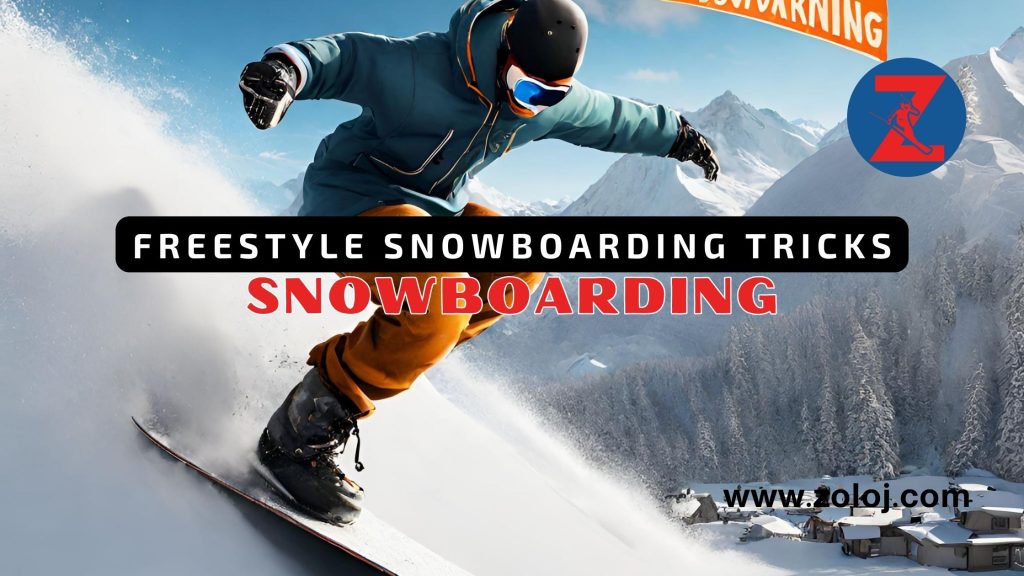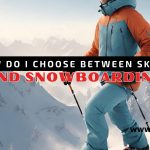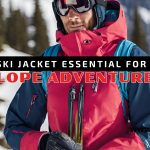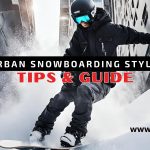Are you ready to take your snowboarding skills to the next level? Get ready to dive into the exhilarating world of freestyle snowboarding, where riders defy gravity and push the boundaries of what’s possible on the slopes. Whether you’re a beginner looking to learn some basic tricks or an experienced rider aiming to master advanced maneuvers, this comprehensive guide has got you covered.
Freestyle snowboarding is all about creativity, style, and expression. It’s the art of performing jaw-dropping tricks and breathtaking maneuvers while seamlessly flowing down the mountain. But how exactly do you go from carving the slopes to nailing those mind-blowing flips and spins?
In this guide, you’ll find everything you need to know to become a freestyle snowboarding pro. From essential tips and techniques to the latest gear recommendations, we’ll help you unlock your full potential and conquer the world of freestyle snowboarding.
So, are you ready to jump into the world of snowboarding freestyle? Let’s get started!
Getting Started with Snowboarding Freestyle

Are you ready to take your snowboarding skills to the next level? Embarking on the thrilling journey of snowboarding freestyle is a fantastic way to challenge yourself and experience the exhilaration of performing tricks and maneuvers on the slopes. In this section, we will guide beginners through the essential steps to get started with snowboarding freestyle, from learning beginner snowboarding tricks to mastering snowboard freestyle techniques. With a little practice and the right snowboarding tips, you’ll be confident and shredding up the park in no time.
Step 1: Master the Basics
Before diving into freestyle snowboarding, it’s crucial to build a strong foundation in basic snowboarding skills. Make sure you are comfortable with riding, turning, and stopping on your snowboard. Familiarize yourself with the different types of terrain and conditions you might encounter on the slopes.
Once you have the fundamentals down, it’s time to start learning beginner snowboarding tricks. These tricks will introduce you to the world of freestyle and help you develop balance, coordination, and control over your snowboard. Some beginner tricks to get started with include:
- Ollie: Learn how to pop your snowboard off the ground by flexing your legs and using your back foot to spring upwards. This trick is the foundation for many other tricks in freestyle snowboarding.
- Nollie: Similar to the ollie, the nollie involves popping the nose of your snowboard off the ground instead of the tail. It’s a useful trick for getting over obstacles and adding style to your riding.
- Butter: Buttering involves using pressure and flexion to manipulate your snowboard on the snow. Mastering buttering will give you better control over your board and open up possibilities for more advanced tricks.
- 180s: Start by practicing 180-degree spins on flat ground, then progress to doing them off small jumps or natural features. These spins are a great introduction to rotational tricks in freestyle snowboarding.
Step 2: Build Confidence and Improve Skills
As a beginner in snowboarding freestyle, it’s essential to build confidence in your abilities and gradually progress your skills. Start by practicing your beginner tricks on small jumps and features in the terrain park. Focus on mastering each trick before moving onto more advanced maneuvers.
Take advantage of terrain park lessons or clinics offered by your local snowboard school to receive expert guidance and feedback. The instructors will teach you proper snowboard freestyle techniques, help you refine your skills, and ensure you’re progressing safely.
Consistency and repetition are key to improving as a snowboarder. Dedicate regular practice sessions to perfecting your tricks and explore different features within the terrain park. Each session will build upon the previous one, allowing you to develop muscle memory and gain a deeper understanding of the freestyle snowboarding techniques.
Step 3: Learn from the Pros
To accelerate your progress in snowboarding freestyle, it’s beneficial to watch and learn from professional riders. Follow snowboarding influencers and athletes on social media platforms like Instagram and YouTube. They often share valuable snowboarding tips and tutorial videos that can help you refine your technique and expand your trick repertoire.
“Learning snowboarding freestyle is a journey of constant growth and exploration. Don’t be afraid to try new tricks and push your limits. Enjoy the process and have fun!” – Pro Rider, Amy Johnson
Gearing Up for Snowboarding Freestyle
When starting with snowboarding freestyle, it’s crucial to have the right gear to support your progress and ensure your safety. Here are some essential items to consider:
| Item | Description |
|---|---|
| Snowboard | Choose a freestyle-oriented snowboard that suits your height, weight, and riding style. Look for boards with twin shapes, medium flex, and a centered stance to facilitate switch riding. |
| Bindings | Opt for bindings that provide good flexibility and freestyle-oriented features like tool-less adjustments for on-the-go customization and shock absorption for a smoother ride. |
| Boots | Select boots that offer a comfortable fit and good ankle support. Look for boots with medium flex to provide the flexibility needed for freestyle tricks. |
| Protective Gear | Wear a helmet, wrist guards, and padded shorts to protect yourself from potential falls and impacts while learning and practicing tricks. |
Investing in quality gear that suits your needs and abilities will enhance your freestyle snowboarding experience and promote progression.
By following the steps outlined in this section and utilizing the provided snowboarding tips, you’ll be well on your way to mastering snowboarding freestyle. Remember to start slowly, be patient with yourself, and enjoy the journey of learning and pushing your boundaries on the slopes.
Advanced Freestyle Snowboarding Tricks
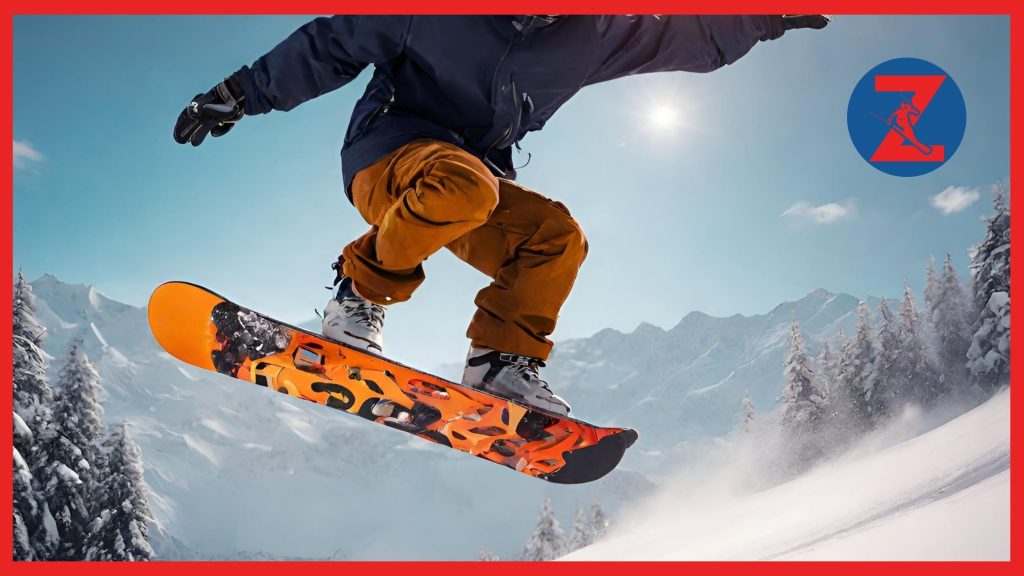
For experienced riders looking to take their freestyle snowboarding skills to the next level, mastering advanced tricks is the ultimate goal. These tricks not only showcase style and creativity but also require a high degree of technical ability and precision. In this section, we will explore some of the most impressive and challenging tricks in freestyle snowboarding, including grabs, spins, and flips.
Grabs
Grabs are a staple of freestyle snowboarding, adding flair and individuality to your tricks. They involve reaching down and grabbing the snowboard with either hand while in mid-air, creating visually captivating moments. Some popular grabs include:
- Melon Grab: This grab involves reaching down with your front hand and grabbing the heel edge of the board between your bindings
- Indy Grab: In this grab, you reach down and grab the heel edge of the board with your back hand, slightly closer to the tail
- Stalefish Grab: With this grab, you reach behind your back leg and grab the heel edge of the board on the same side with your back hand
Spins
Spinning tricks are a mainstay of freestyle snowboarding, allowing riders to showcase their agility and control in the air. Here are some popular spinning tricks to master:
- 180: The 180 involves rotating your body and board 180 degrees in the air
- 360: Taking it up a notch, the 360 requires a full rotation of 360 degrees
- Corkscrew: This advanced spin combines multiple rotations while adding a stylish off-axis twist to the maneuver
Flips
Flips in freestyle snowboarding add an element of excitement and adrenaline to your repertoire. While they require advanced skill and courage, they can elevate your tricks to a whole new level. Some popular flips include:
- Backflip: The backflip involves rotating your body backward in the air, tucking your knees toward your chest for a compact rotation
- Frontflip: In this flip, you rotate your body forward, extending your legs and keeping them tucked throughout the rotation
- Rodeo: The rodeo is a complex flip where you initiate a backflip but add a sideways spin, creating a stunning and dynamic aerial maneuver
Remember, mastering these advanced tricks takes practice, patience, and a solid foundation in basic freestyle snowboarding techniques. Always prioritize safety and progression, gradually building up your skills and confidence. Consult with experienced riders or take professional lessons to ensure you have a solid understanding of the proper techniques for executing these tricks safely.
| Trick | Description | Tips |
|---|---|---|
| Melon Grab | Reach down with your front hand and grab the heel edge between your bindings | – Keep your body compact for better control – Extend your legs for added style |
| Indy Grab | Reach down with your back hand and grab the heel edge closer to the tail | – Keep a balanced body position – Focus on timing and smooth execution |
| Stalefish Grab | Reach behind your back leg and grab the heel edge on the same side with your back hand | – Practice bending your body to reach behind your leg – Maintain a stable core for better balance |
| 180 | Rotate your body and board 180 degrees in the air | – Spot your landing early – Use your arms for controlled rotation |
| 360 | Complete a full rotation of 360 degrees in the air | – Use your head as a spotting tool – Keep your core engaged for stability |
| Corkscrew | Combine multiple rotations with an off-axis twist | – Generate momentum through your legs and core – Control your rotation with your upper body |
| Backflip | Rotate your body backward, tucking your knees toward your chest | – Focus on initiating the rotation with your hips – Keep your eyes on the landing |
| Frontflip | Rotate your body forward, extending your legs and keeping them tucked | – Use your arms to initiate the rotation – Keep a balanced body position throughout |
| Rodeo | Perform a backflip with a sideways spin | – Practice proper timing of the spin and flip – Keep a strong core for control |
Essential Gear for Freestyle Snowboarding
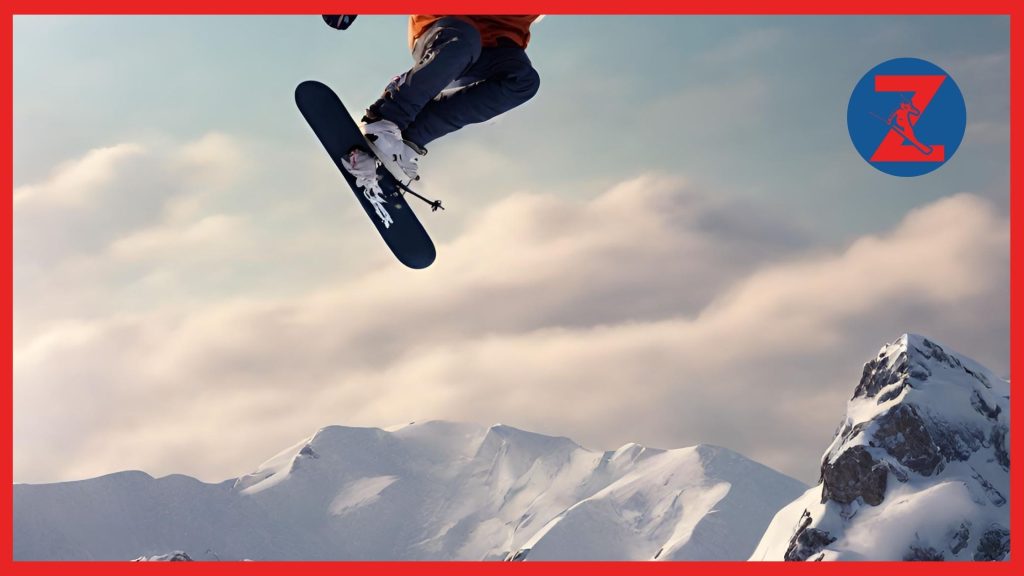
When it comes to freestyle snowboarding, having the right gear is essential for a remarkable and safe riding experience. From choosing the right snowboard to finding the perfect boots and protective gear, every piece of equipment plays a crucial role in enhancing freestyle performance. Whether you’re a seasoned rider or just starting out, investing in high-quality gear that suits your style and preferences is key.
Snowboard
The foundation of any freestyle snowboarding setup is the snowboard itself. When selecting a snowboard for freestyle riding, consider factors such as flex, shape, and length. A shorter and softer board allows for more maneuverability and effortless tricks, perfect for riders who want to focus on jumps, spins, and jibs. On the other hand, a longer and stiffer board offers stability and control, ideal for tackling bigger jumps and fast speeds.
Bindings
Bindings play a crucial role in connecting your boots to the snowboard, providing control and responsiveness. For freestyle snowboarding, opt for bindings that offer a medium flex, allowing for a good balance of maneuverability and stability. Additionally, look for bindings with adjustable highbacks and straps that provide a secure and comfortable fit. Remember to choose bindings that are compatible with your snowboard and boots to ensure a proper setup.
Boots
Choosing the right boots is essential for both comfort and performance on the slopes. Look for freestyle-specific boots that offer a medium to soft flex, allowing for optimal flexibility and control. Make sure the boots provide a snug fit and adequate ankle support to enhance stability during tricks. Additionally, consider the liner technology, lacing system, and overall construction of the boots to find the perfect pair for your freestyle adventures.
Protective Gear
Safety should always be a priority in freestyle snowboarding, and wearing the right protective gear is crucial to minimize the risk of injuries. A helmet is a must-have to protect your head during falls, jumps, and tricks. Wrist guards and knee pads are also highly recommended, as they provide additional support and protection for important joints. Don’t forget to wear impact shorts, which offer padding for your hips and tailbone, mitigating the impact of falls.
It’s important to invest in high-quality protective gear that fits properly and offers reliable protection. Look for gear that is specifically designed for snowboarding and meets necessary safety standards. Prioritize comfort, durability, and functionality when selecting your protective gear to ensure a safe and enjoyable freestyle snowboarding experience.
Freestyle Snowboarding Competitions: The Ultimate Challenge
Freestyle snowboarding competitions are the epitome of excitement and skill in the snowboarding world. From jaw-dropping tricks to nail-biting displays of athleticism, these events showcase the best of the best in the sport. Whether you’re a seasoned rider or an aspiring competitor, freestyle snowboarding competitions offer the ultimate challenge to push your limits and showcase your talent.
There are various types of freestyle snowboarding competitions, each with its own unique format. From slopestyle to halfpipe and big air, riders have the opportunity to demonstrate their creativity, technical ability, and style in different arenas. While the specific rules and judging criteria may vary, the overarching goal remains the same: impress the judges and earn top scores.
Types of Freestyle Snowboarding Competitions
- Slopestyle: In slopestyle competitions, riders navigate a course featuring a combination of jumps, rails, and other features. They perform a series of tricks, aiming to execute them with style, difficulty, and consistency. The judges evaluate each run based on factors such as trick variety, execution, amplitude, and landing.
- Halfpipe: Halfpipe competitions take place in a U-shaped structure consisting of two vertical walls and a flat bottom. Riders perform tricks while launching themselves into the air from one wall to the other. The judges assess elements like amplitude, trick difficulty, execution, and creativity to determine the scores.
- Big Air: Big air competitions focus on a single massive jump, where riders perform their most spectacular tricks. They launch themselves off the jump, showcasing incredible spins, flips, and grabs while aiming for height, style, and technical acuity. Judges score based on trick difficulty, execution, style, and landing.
Preparing for Freestyle Snowboarding Competitions
To compete at your best in freestyle snowboarding competitions, it’s essential to prepare both physically and mentally. Here are some valuable tips to help you get ready for the ultimate challenge:
“Train consistently by spending time on the slopes, honing your skills, and refining your tricks. Focus on building strength, flexibility, and endurance through a combination of snowboarding, cross-training, and targeted exercises. Practice visualization techniques to mentally prepare yourself for the competition, visualizing your runs and successful tricks. Lastly, watch and learn from professional riders, studying their techniques, style, and approach to competitions.” – Chloe Kim, Olympic gold medalist in snowboarding
Training Tips from the Pros
Who better to learn from than the professionals who have mastered the art of freestyle snowboarding? Here are some valuable insights from renowned riders:
- “Consistency is key. Practice your tricks repeatedly until they become second nature. The more comfortable and confident you are with your tricks, the better you’ll perform in competitions.” – Shaun White, two-time Olympic gold medalist in snowboarding
- “Don’t be afraid to push your limits. Freestyle snowboarding is all about progression, so challenge yourself with new tricks and techniques. It’s through pushing boundaries that you’ll discover your true potential.” – Anna Gasser, X Games gold medalist in snowboarding
- “Focus on the details. Pay attention to your body position, edge control, and timing. Small adjustments can make a big difference in the execution of your tricks.” – Mark McMorris, X Games gold medalist in snowboarding
| Competitions: | Judging Criteria: | Training Tips: |
|---|---|---|
| Slopestyle | Trick variety, execution, amplitude, landing | Consistent training and visualization techniques |
| Halfpipe | Amplitude, trick difficulty, execution, creativity | Focus on building strength and flexibility |
| Big Air | Trick difficulty, execution, style, landing | Don’t be afraid to push your limits |
By embracing these tips and learning from the experiences of seasoned riders, you can elevate your freestyle snowboarding to new heights. Remember, competitions are not just about winning but also about celebrating the sport, pushing boundaries, and enjoying the adrenaline rush that comes with freestyle snowboarding. So embrace the challenge, give it your all, and let your passion for snowboarding drive you to greatness!
Staying Safe and Injury-Free in Freestyle Snowboarding
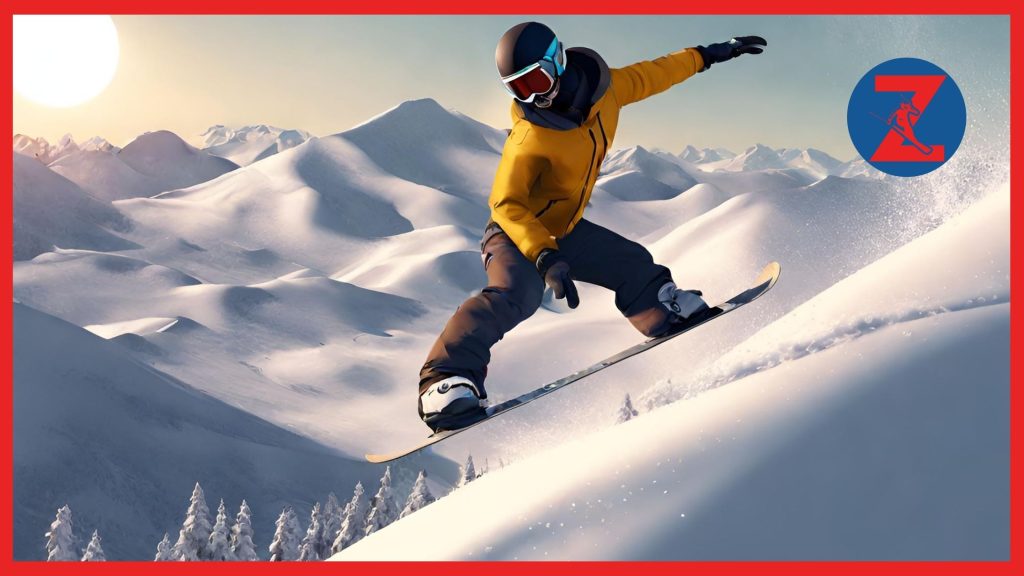
When it comes to freestyle snowboarding, safety should always be a top priority. By following a few simple tips and utilizing the right gear, you can minimize the risk of injuries and enjoy your experience to the fullest. Whether you’re an experienced rider or just starting out, here are some key safety measures, warm-up exercises, and techniques to protect yourself while performing tricks.
Safety Precautions
- Always wear a helmet: Protect your head from potential impacts by wearing a properly fitted helmet designed for snowboarding. This will reduce the risk of head injuries and give you peace of mind.
- Check your equipment: Before hitting the slopes, inspect your snowboard, bindings, and boots to ensure they are in good condition. Make sure your bindings are securely fastened and your boots provide proper support.
- Know your limits: It’s important to know your skill level and only attempt tricks that you are comfortable with. Pushing your limits too far can increase the risk of accidents.
- Observe and communicate: Pay attention to other riders and communicate with them on the slopes. Be aware of your surroundings and respect the right of way.
- Stay on designated areas: Stick to freestyle areas designated by the resort and avoid venturing into unmarked or closed-off sections. These areas are specially designed for tricks and jumps, minimizing the risk of collisions with other skiers or obstacles.
Warm-up Exercises
Before getting on your snowboard, it’s important to warm up your muscles and joints to reduce the risk of strains or sprains. Incorporate these warm-up exercises into your routine:
- Neck rotations: Gently rotate your neck clockwise and then counterclockwise to loosen up your neck muscles.
- Shoulder rolls: Roll your shoulders forward and then backward in a circular motion to warm up your shoulder joints.
- Leg swings: Stand next to a wall or hold onto a stable object for support. Swing one leg forward and backward in a controlled manner, then switch to the other leg.
- Squats: Perform a few squats to warm up your leg muscles. Keep your back straight and lower your body as if sitting on an imaginary chair.
- Jumping jacks: Jumping jacks are a great full-body warm-up exercise. Start with your feet together and arms by your sides. Jump your feet outwards while raising your arms above your head, then jump back to the starting position.
Protective Gear
Investing in the right gear can make a significant difference in your safety and overall performance. Consider the following protective gear:
| Protective Gear | Description |
|---|---|
| Impact Shorts | Padded shorts designed to absorb impact and protect your hips, tailbone, and thighs in case of falls. |
| Wrist Guards | Wrist guards provide support to your wrists and help prevent fractures or sprains during falls. |
| Back Protector | A back protector shields your spine and reduces the risk of back injuries when performing high-impact tricks. |
| Elbow and Knee Pads | Padded elbow and knee pads offer added protection to minimize the risk of bruises, cuts, or fractures. |
| Goggles | Goggles with UV protection and anti-fog capabilities are essential for maintaining clear vision and protecting your eyes from the sun, wind, and snow. |
Remember, the right gear can greatly enhance your safety and enjoyment while freestyle snowboarding. Investing in quality protective gear is an investment in your well-being. By following safety precautions, warming up properly, and using the right gear, you can minimize the risk of injuries and fully embrace the exhilaration of freestyle snowboarding.
Conclusion
In conclusion, freestyle snowboarding offers an exhilarating experience for riders of all skill levels. Throughout this article, we have explored the world of freestyle snowboarding, from beginner tricks to advanced maneuvers, and the essential gear needed for a successful ride.
Practice and perseverance are key to mastering freestyle snowboarding. By continuously honing your skills and pushing yourself to try new tricks, you can unlock your full potential on the slopes.
However, safety should never be compromised. Protecting yourself with proper equipment, following safety precautions, and warming up properly are crucial for a safe and injury-free freestyle snowboarding experience.
So, whether you’re a beginner looking to take your first steps into the world of freestyle snowboarding or an experienced rider seeking to improve your skillset, embrace the thrill, embrace the challenge, and dive into the exciting world of freestyle snowboarding!
FAQ
Q: What is freestyle snowboarding?
A: Freestyle snowboarding is a style of snowboarding that focuses on performing tricks and maneuvers on various terrains, including parks, halfpipes, and natural features. It involves jumps, spins, grabs, and flips, allowing riders to showcase their creativity and style.
Q: What are some beginner snowboarding tricks to try?
A: For beginners, it’s best to start with basic tricks such as ollies, nose and tail grabs, and 180-degree spins. These tricks provide a solid foundation for building skills and confidence on the slopes.
Q: How can I improve my freestyle snowboarding techniques?
A: Consistent practice is key to improving freestyle snowboarding techniques. Focus on mastering fundamental tricks, gradually progressing to more advanced maneuvers. Watching tutorial videos, receiving coaching, and riding with more experienced snowboarders can also help enhance your skills.
Q: What gear do I need for freestyle snowboarding?
A: To embark on your freestyle snowboarding journey, you’ll need a reliable snowboard, bindings that provide flexibility and responsiveness, suitable boots for all-day comfort, and protective gear such as a helmet and wrist guards. It’s important to choose gear that suits your riding style and skill level.
Q: Are there freestyle snowboarding competitions?
A: Yes, there are various freestyle snowboarding competitions held worldwide. These competitions showcase the skills and creativity of snowboarders, ranging from smaller local events to high-profile international contests like the X Games and the Winter Olympics.
Q: How can I stay safe while freestyle snowboarding?
A: Safety should always be a priority in freestyle snowboarding. It’s crucial to wear proper protective gear, such as a helmet and impact-resistant clothing. Additionally, warm-up exercises, proper technique, and awareness of your surroundings can help minimize the risk of injuries.

